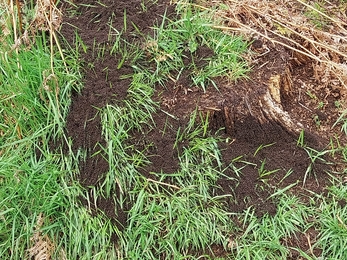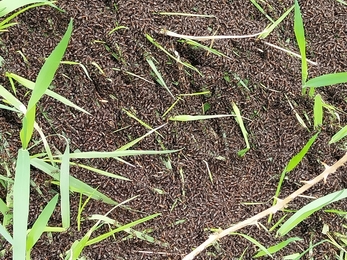We are of course talking about the UK’s largest ant species: the southern wood ant. However, this species isn’t known purely for its predatory success, it has also developed a fascinating, more passive way of sourcing its favourite food.
At around 1cm in length, the southern wood ant uses its large mandible (insect mouth) to feed on a wide variety of insects and invertebrates which the worker ants collect from the area surrounding the colony. Surprisingly, its favourite food is actually honeydew. This is a sweet, sugary substance that is secreted by aphids (small sap eating insects) and which makes up the bulk of the ant’s diet.
The ant has found an ingenious way of sourcing their favourite food, which has also created a symbiotic relationship with the aphid. The ant strokes the abdomen of the aphid with its antennae, stimulating the secretion of honeydew. The presence of the ants in-turn protects the aphids, deterring attacks from other predators. It is believed a single colony can consume up to a quarter of a tonne in a year!


